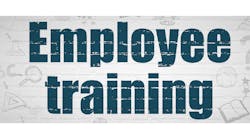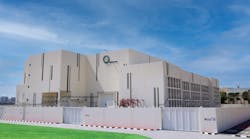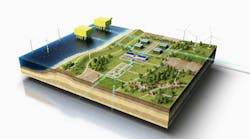Thermal & Visual Monitoring solutions offer utilities numerous benefits over traditional approaches to maintenance.
Instead of costly truck rolls and manual inspections, utility-grade sensors allow the Operations & Maintenance (O&M) team to monitor the health of high-value substation assets remotely. By detecting sudden or prolonged changes in temperature, utilities can identify potential issues, diagnose the problem, and dispatch a crew to conduct the repair, all from a centralized location.
As with any new technology, however, the full benefits of Thermal & Visual Monitoring solutions can only be achieved if employees are fully trained on the system and confident using it as part of their day-to-day work.
An Effective Training Program
If you’ve made an investment in new technology, the last thing you want is for the solution to go unused by employees because of a lack of training.
This is particularly relevant in the utility environment, where dozens of software solutions are deployed and compete for users’ attention. If an employee isn’t comfortable with the software, they’re unlikely to have the time or motivation needed to learn on their own.
Training and development opportunities have a direct impact on the success or failure of new technology deployments. For example, a 2018 McKinsey survey found that developing talent and skills throughout the organization was one of the most important factors during a digital change initiative.
Beyond the immediate benefits, training also leads to more engaged, satisfied, and productive employees who are more likely to remain with an organization than employees who do not receive development opportunities.
Training Requirements for Remote Substation Monitoring
Fortunately, the training needed for remote substation monitoring solutions does not have to be long or complex.
The Systems With Intelligence Thermal & Visual Monitoring Solutions have been designed and built for the utility industry. As a result, the sensors are generally easy to use in most scenarios, and the software, dashboard, and features are familiar to those who have worked with other similar applications.
Training focuses on the graphical user interface (GUI) and dashboard, ensuring that users can access, read, interpret, and make decisions using the data provided by the sensors.
From there, training can be tailored to the employee’s specific role. For example, maintenance crews and technicians may spend more time learning how to access repair manuals, update documentation, and view schedules. Asset Managers, on the other hand, may focus on viewing overall asset health and managing the wider network of substations.
Ongoing Training Opportunities for Utility Staff
Training on the system starts during the final stages of deployment. Once the sensors and software have been installed, the Systems With Intelligence team works closely with utility staff to test, configure, commission, and hand over the solution. Teams receive hands-on training so that they have the experience needed to take over and use the system going forward.
Ongoing training and refresher courses then provide existing employees with more opportunities to learn. At the same time, new employees who have joined the utility since the initial deployment can be brought up to speed during these sessions.
Training can either be delivered on-site or virtually, but in-person is generally recommended whenever possible, especially for the initial deployment. The full program typically takes between two days to one week depending on the number of staff and the needs of the utility.
Achieving the Full Benefits of Condition-Based Maintenance
Thermal & Visual Monitoring Solutions allow utilities to transition away from scheduled maintenance toward a Condition-Based Maintenance strategy.
By monitoring the health of substation assets remotely, utilities can drastically reduce the number of truck rolls and physical inspections needed to repair and maintain equipment. Not only does this reduce the overall cost of maintenance, but it also improves safety and reliability while allocating scarce technical resources more effectively.
To achieve these benefits, employees must be comfortable using the new solution. Through both initial and ongoing training programs, the Systems With Intelligence team ensures staff have the skills needed to access, interpret, use, and make decisions with the data provided by the monitoring system.
As a result, utilities can realize a positive return on investment and provide safe, reliable electricity to customers.



